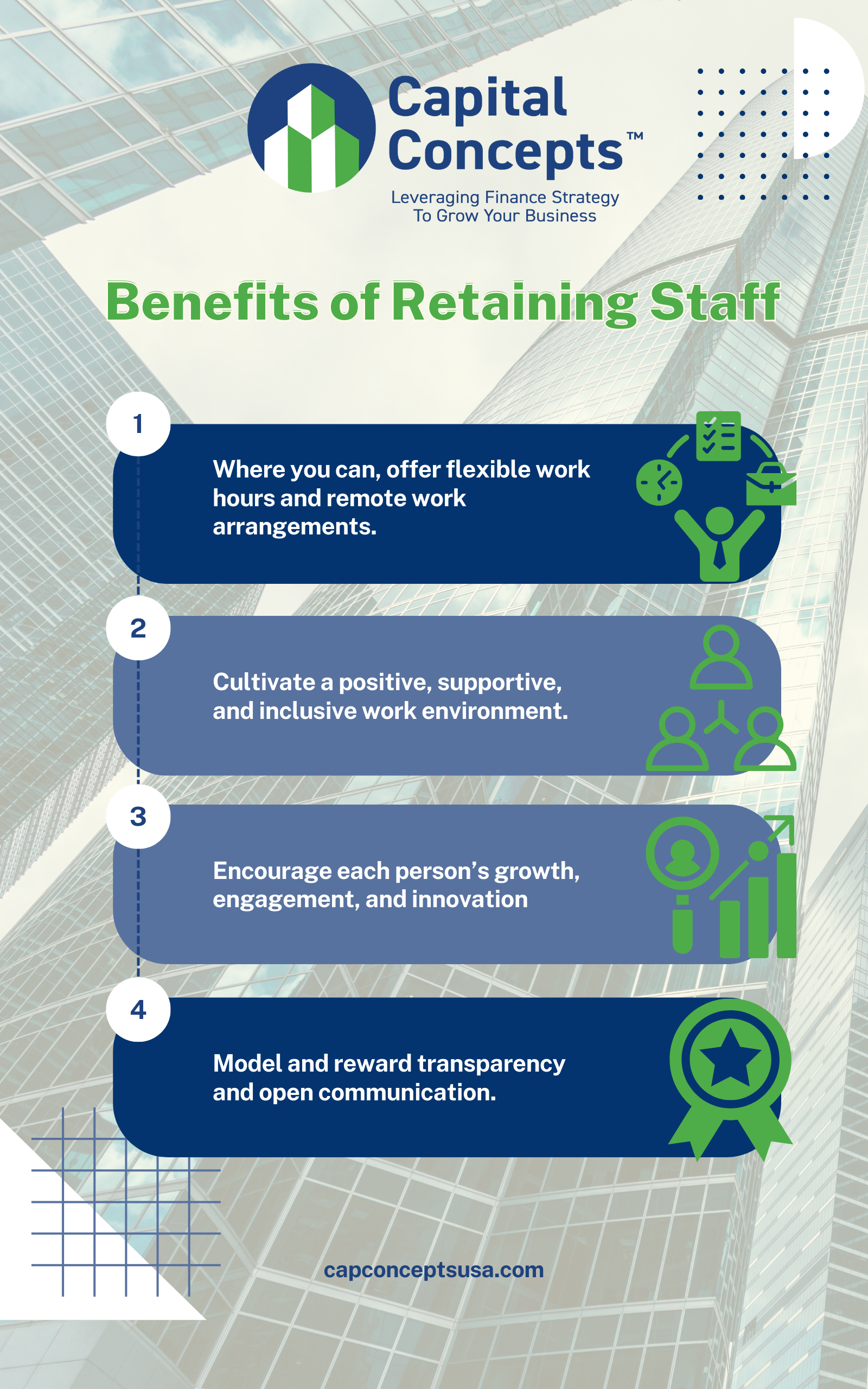“I wanted to let you know I’ve found another position and will be moving on...”
This isn’t what you want to hear from an employee. Keeping — let alone hiring — employees with strong buy-in to your organization can be a real challenge. Staff turnover can breed financial complications, not just for HR but for the entire company.
In this article, we’re uncovering the delicate relationship between employee retention and the health of your business. So why is employee retention so important anyways? And what’s the secret to forming a healthy, dynamic team over time? Keep reading…

Employee Retention: What’s the big deal?
Your team, or your people, is one of the four “intangible capitals” you have within your business. (The others are structural, customer, and social capital.) If you have staff retention issues, it is reasonable to be worried that prospective buyers of your business might be scared away.
On top of this, staff retention issues are often the harbinger of financial challenges. Employees jumping ship is not merely a headache for human resources — it’s a flashing red signal pointing toward potential monetary troubles. When an organization constantly has to replace staff, the costs can pile up quickly, including recruitment expenses, training expenditures, and the loss of productivity during the transition.
A high employee turnover rate can trigger a domino effect: it damages the company’s reputation, makes it harder to attract top talent, and in turn, can negatively impact the business’s growth and profitability.
How To Keep Good Employees
All of this can be avoided through retention and healthy work culture. Ensuring that employees remain satisfied has financial rewards.
Avoid employee burnout by:
✔️ Providing sufficient employee development resources
✔️ Establishing clear career paths
✔️ Offering incentives to maintain talented individuals who drive the company forward
Company culture starts at the top. If your culture is toxic, it will be impossible to change unless you and your executive leaders are willing to change too.
Benefits of Retaining Staff
When you take time to reflect the worth of each team member, it keeps your business competitive in attracting and retaining talent. Especially in the current climate, people are prioritizing a healthy work-life balance. Demonstrating that you understand and care for employees’ well-being cultivates loyalty among your workforce.
Supporting your employees as whole people is essential for establishing trust and enabling your team to feel valued and appreciated. Ways to do this vary with the type of business, but it starts at the top.
Some ideas include:
✅ Where you can, offer flexible work hours and remote work arrangements.
✅ Cultivate a positive, supportive, and inclusive work environment.
✅ Encourage each person’s growth, engagement, and innovation.
✅ Model and reward transparency and open communication.
By incorporating these best practices into your hiring and employee retention strategy, you will attract exceptional talents and create an empowering atmosphere that encourages employees to thrive and reach their fullest potential.
If your business performance is suffering, take a look at our top 10 ideas for improving your business’s performance.

At Capital Concepts USA, we have financial, marketing and sales, and operations consultants who can work with you to craft a plan and set goals that will make a difference in your business. Contact us today for a free 15-minute call with our founder, Lorne Greenfield.
Related Articles
Five Ways Financial Management Improves Your Business’s Value
Poor financial management can manifest itself in many ways, but the price is always the same: the value of your business.
Odds are, as the owner of your business you are a strategist, visionary, and leader. But you likely don’t have the bandwidth to manage the complexities of your business’s finances.
But not to worry! We’ve outlined 5 ways financial management will improve your business’s value.
How To Avoid the Biggest Valuation Mistake Made by Business Owners
You’ve been working on the sale of your business for months now. All the work, not just to complete this sale but to build a business someone else actually wants to buy, is about to pay off.
You hold your breath as the sales agent slides a piece of paper across the desk towards you…with a number completely different than you’d negotiated!
“As you know, we did a final business valuation last week to determine the final sale price for the closing today,” she explains. “After reviewing all of your records, we have determined that the value decreased from our initial estimate a year ago. As a result, the sale price will be 25% lower than we originally planned.”
What happened to the profitable sale you worked so hard for?!
What To Do If Your Business’s Valuation Is Too Low
You’ve decided to create an exit plan, and now it’s time to find out how much your business is worth. What if the value comes in lower than you expected? In this week’s Insights article, we talk about common issues that contribute to a low business valuation and how to move forward.
Need Fresh Eyes On Your Business?
We offer complementary consultations to help you identify the areas where you could most quickly and easily improve your business’s performance, value, and profitability. Request one today.




0 Comments